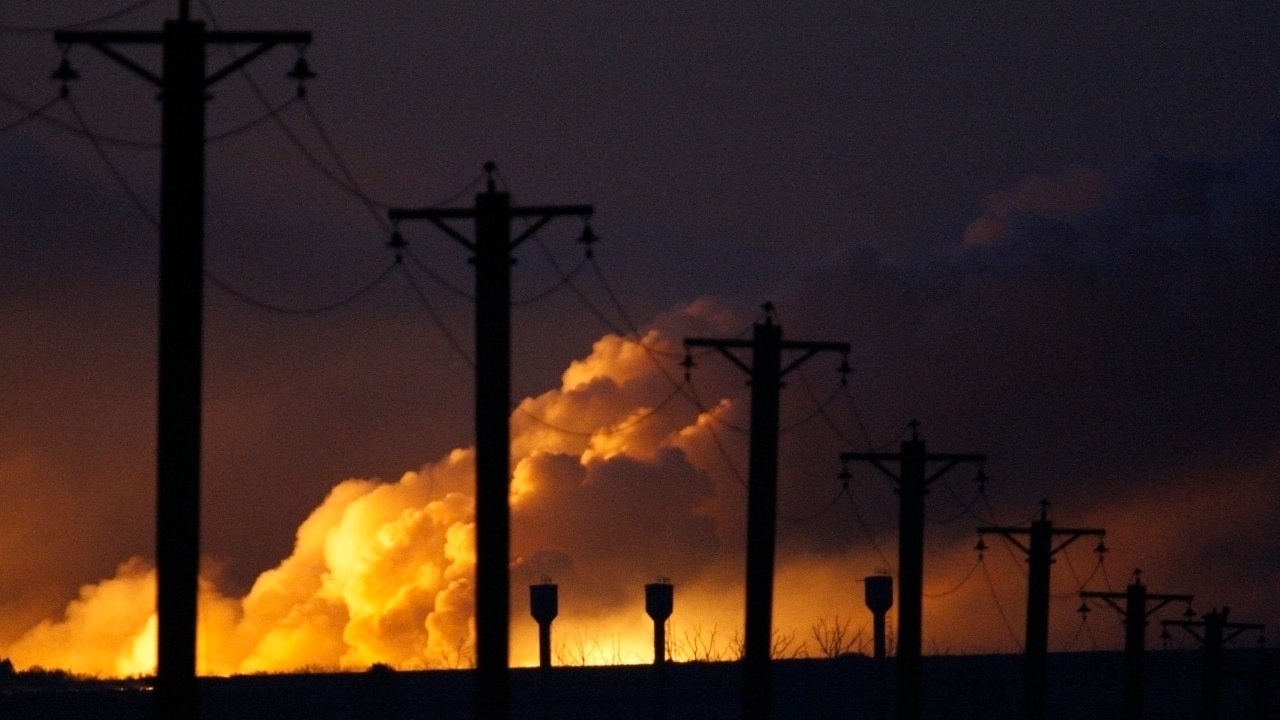Ukraine’s electricity grid is close to financial collapse. Ukrainians are not paying — cannot pay — electricity bills. This amounts to an estimated $300m monthly deficit, which could push the power sector into default within weeks without urgent foreign assistance or a technical grid update to allow Ukraine to sell electricity to Europe.
Having broken its historic link to the Russian grid just a few hours before the invasion on February 24, emergency grid integration on March 16 with the European Network of Transmission Grid Operators (ENTSO-E) saved Ukraine from being unable to import electricity when needed.
The new European link may prove vital to Ukraine, far beyond emergency electricity imports. The Russian invasion has caused an electricity consumption drop of 30-35%; approximately 34% for residential and 32% for industrial consumers. That’s explained by the movement of millions of refugees from homes and towns besieged by Russia’s quasi-medieval tactics of encirclement and bombardment. In Mariupol, for one, 90% of buildings have been bombed. Taken as a whole, this creates far less power demand.
Ukraine’s three major public power generation companies now face a dilemma similar to public transport systems hit by pandemic ridership drops. They must offer a public service despite drastically lower demand and revenues. Overall electricity payments dropped by 60% in March; a 73% fall for industrial customers and 55% for smaller consumers. Despite an April uptick, power companies remain deep in the red.
There are upsides. The consumption drop means, for once, Ukraine is not critically short of power generation fuel, specifically coal and natural gas. And moreover, the decline will allow Ukraine to phase out coal generation almost immediately, a big environmental win. Coal generation made up 28% of prewar electricity, so lower carbon generation can be prioritized now without jeopardizing supply.
But there is an immediate problem — Ukraine’s power plants will soon lack the funds to continue operating. According to Maxim Timchenko, chief executive of DTEK, Ukraine’s largest private power company, the power system is mostly operating normally but power companies face a 70-75% drop in revenue sector-wide. Private firms are expected to weather this storm slightly better because industrial consumers will probably resume payment, but for public sector power generation companies the crisis is immediate.
Three public companies generate over 65% of Ukraine’s electricity. Centroenergo is the largest public thermal (coal and natural gas) generation company at 8% of Ukraine’s power. Energoatom, the public nuclear generation company that owns the Zaporizhye nuclear power plant that Russian forces shelled and seized, produces 53% of Ukraine’s power, while Ukrhydroenergo runs the hydroelectric plants generating 8% of power. Their collective deficit is currently at least $250m-$300m/month. The overall sector deficit is even higher. (This is hard to calculate precisely because it depends on daily variables, such as the cost of fuel inputs, the damage suffered by generation and distribution infrastructure, and other factors.)
What to do? On March 24, Ukraine’s Ministry of Energy sent wrote the US Departments of Energy and State, and the White House, seeking four months’ bridge financing to cover the immediate liquidity gap. Minister of Energy German Galushchenko made the “urgent request to support [sic] Ukrainian energy sector and the entire economy in these extremely challenging times.”
Meanwhile, Ukraine has established an Energy Support Fund to be overseen by the European Energy Community Secretariat. It will aggregate financial support for the energy sector from international governments and organizations. Donations will be allocated and administered by the Ukrainian Ministry of Energy to buy fuel, equipment, and secure other needs to maintain power supplies during the war.
Additionally, the Ukrainian government is considering lumping power generators together into a “single-buyer” pool to be called the Ukrainian Energy Emergency Response and Recovery Facility. This is one of several (much questioned) efforts by the Ukrainian government to address wartime issues through nationalization or centralization.
This plan alarms power sector players in Ukraine as well as international experts who worry about a return to government control at the expense of market-based reforms. The country’s long history of market manipulation and government meddling, causing dysfunction and corruption, led the international community to push hard for the creation in July 2019 of a new power sector market. It was intended to resolve through liberalization and de-monopolization the longstanding issues created by government price caps and a system in which state-owned Energorynok was the monopoly electricity trader; the “single-buyer.”
The government’s proposed Energy Emergency Response and Recovery Facility could, as Timchenko says, “mean a complete deconstruction of the European market model that we worked so hard to create, and a return to a Soviet centralized market.”
A better solution would be to equip Ukraine with the technological electricity grid updates necessary to sell power to Europe and thereby reduce its deficit. Last month’s ENTSO-E integration gave Ukraine only an emergency connection to Europe’s grid for the import of power into Ukraine when needed. Ukraine cannot export power until it installs new equipment. Senior Ukrainians in the sector say two major producers of the kit, called statcoms, Germany’s Siemens and US firm General Electric, have either not answered their requests (Siemens) or said it will take 18 months (GE).
If Ukraine gets statcoms, it will technically qualify for a commercial link with the European power network, opening Europe’s power markets to Ukrainian power.
Europe should want Ukrainian power. The country’s export potential is 2 GW (equivalent to the output of more than 700 wind turbines.) Ukraine currently produces power at approximately $71.50/MWh, whereas electricity is around $165/MWh in Poland and $300/MWh in Hungary. In turn, exporting power would earn Ukraine $150m/month. (These projections are highly variable; they depend on the market price of electricity.)
However, keeping cheaper Ukrainian electricity from underpricing local generation was a reason why several countries slow-rolled Ukraine’s integration with ENTSO-E before the invasion, although the March 16 emergency grid integration proves these countries have put Ukraine ahead of their own commercial interests. Whether this will hold is unknown.
Either way, Ukraine is going to need a lot of help, and soon.
Suriya Jayanti is an Eastern Europe energy policy expert. She served for 10 years as a US diplomat, including as the Energy Chief at the U.S. Embassy in Kyiv, Ukraine (2018-2020), and as international energy counsel at the U.S. Department of Commerce (2020-2021). She is currently the Managing Director of Eney, a US-Ukrainian decarbonization company.




